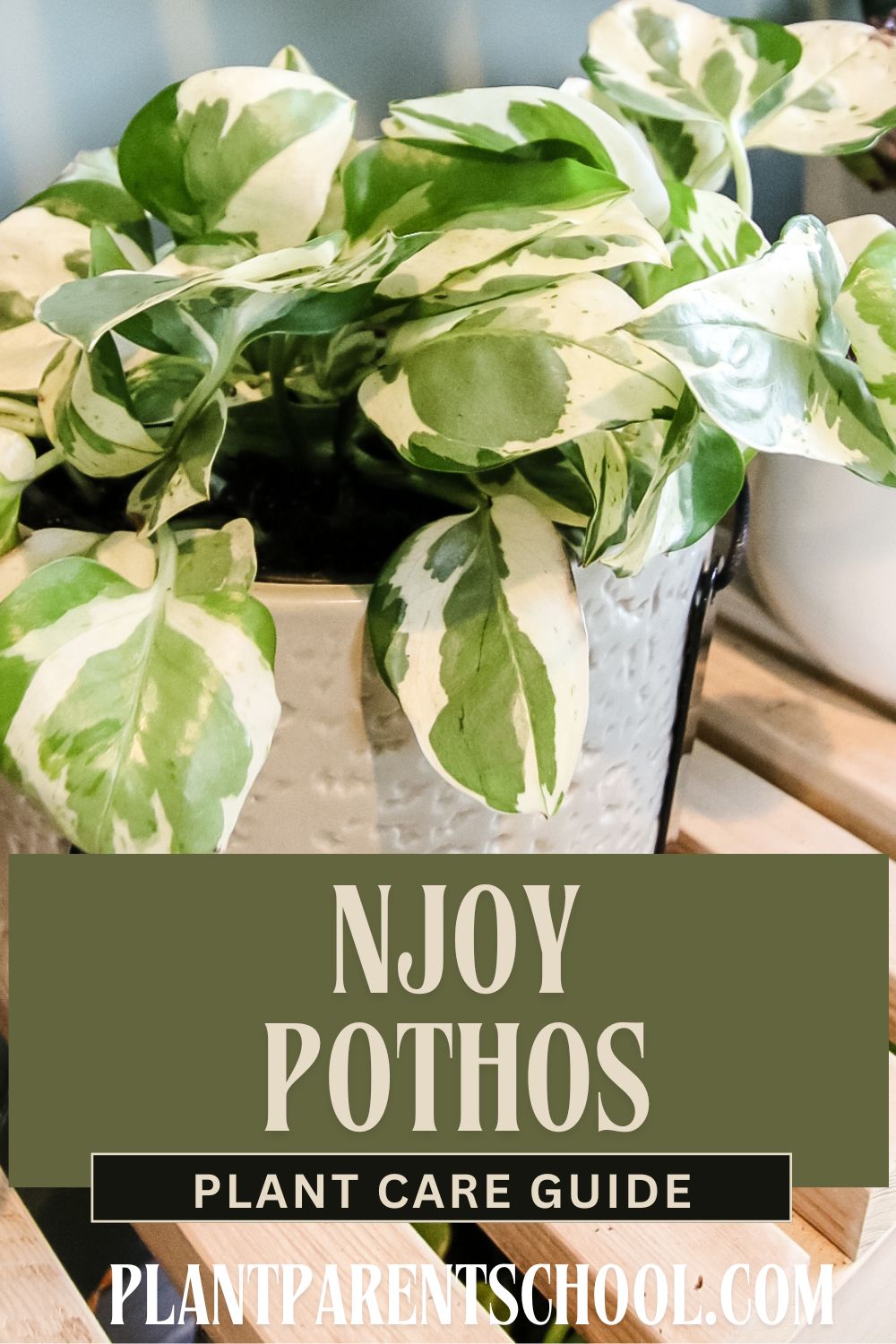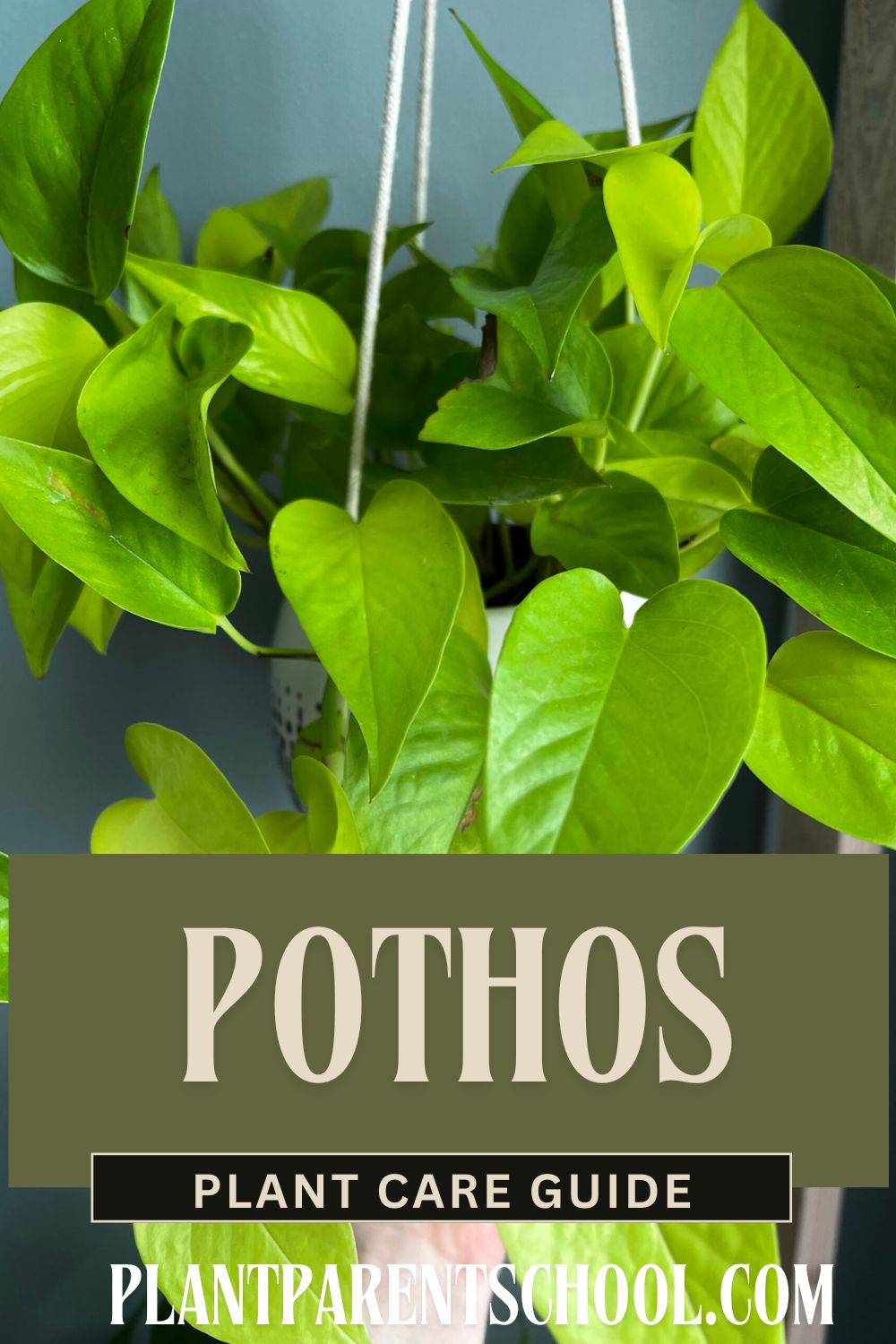The Satin Pothos is a stunning and easy-to-care-for houseplant known for its beautiful, silvery variegated leaves. This care guide will help you maintain a healthy and vibrant Satin Pothos.
Quick Look
- 🌞 Lighting needs: Bright, indirect light
- 💧 Watering needs: Moderate; allow the top 2 inches of soil to dry out
- 📏 Mature height: 6-10 feet (with support)
- 🌱 How to propagate: Stem cuttings in water or soil
- 🚫 Toxic/non-toxic: Toxic to pets and humans
- 🌸 Flowering: Rarely indoors
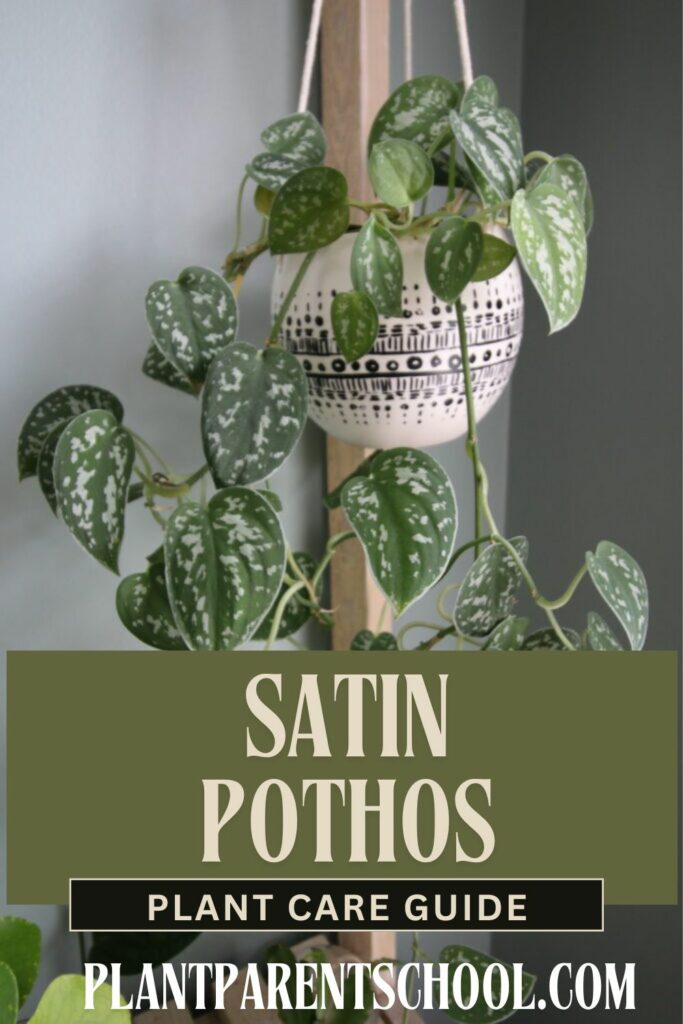
Satin Pothos Plant
The Satin Pothos (Scindapsus pictus), also known as Silver Satin Pothos, Silver Pothos, Silk Pothos, and Silver Vine, is a popular tropical houseplant admired for its small, dark green leaves with beautiful silver variegation.
Native to Southeast Asia, this plant thrives in tropical environments and can be a great addition to any houseplant collection.
Origins
Satin Pothos is native to Southeast Asia, where it grows as a tropical climbing plant in the warm and humid rainforests.
Availability
Satin Pothos is not considered a rare plant. It is widely available in nurseries and garden centers, including major retailers like Lowe's and Home Depot.
Toxicity
All pothos plants, including Satin Pothos, are considered toxic if ingested. Keep them out of reach of curious pets and children.
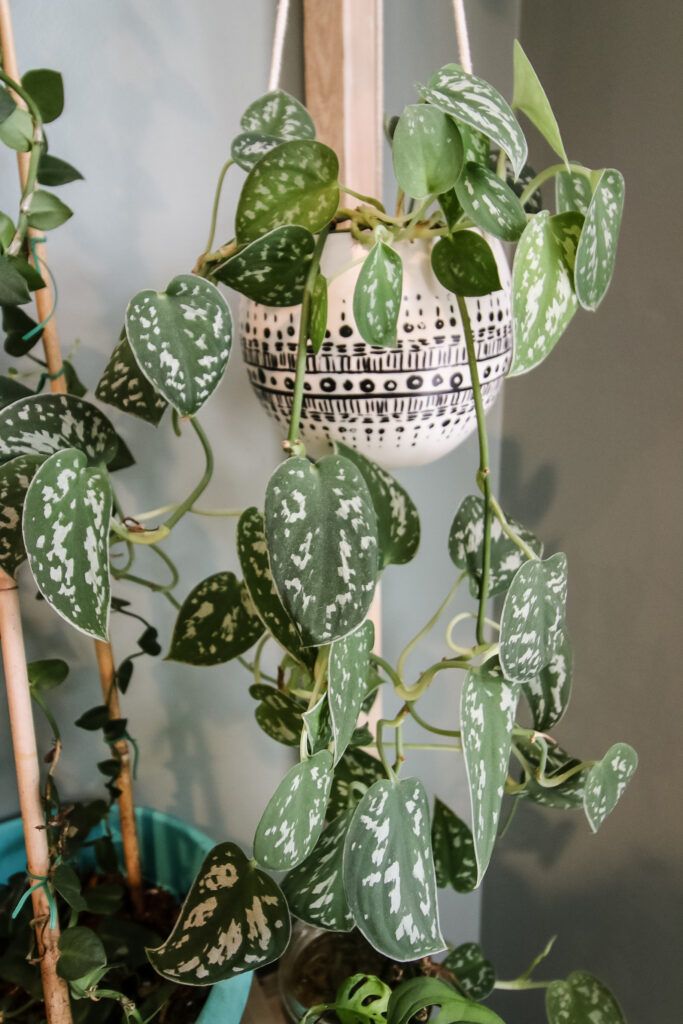
Ease of Care
Pothos plants are known for being super easy to care for, making them ideal for beginner houseplant owners.
Growth Rate
Satin Pothos is labeled as a slow-growing plant. However, with bright, indirect light, it can grow at a decent rate, faster than some other mounding pothos varieties like NJoy but slower than the golden pothos.
Satin Pothos Care Guide
Watering
Water your pothos when the top 2 inches of soil feel dry to the touch. Be sure that your pot has drainage holes to prevent water pooling, which can lead to root rot.
- Frequency: Usually once a week, depending on environmental conditions. It is better to underwater than overwater.
- Misting: Beneficial, especially in dry indoor environments. Mist the leaves, use a pebble tray, or run a humidifier to increase humidity.
Lighting
Satin Pothos thrives in bright, indirect light. Variegated pothos like Satin Pothos need more light to maintain their variegation. In low light, they will turn more green.
Satin Pothos plants can be kept outdoors in the shade as long as temperatures are above 50°F (10°C) overnight. Avoid direct sunlight to prevent leaf burn.
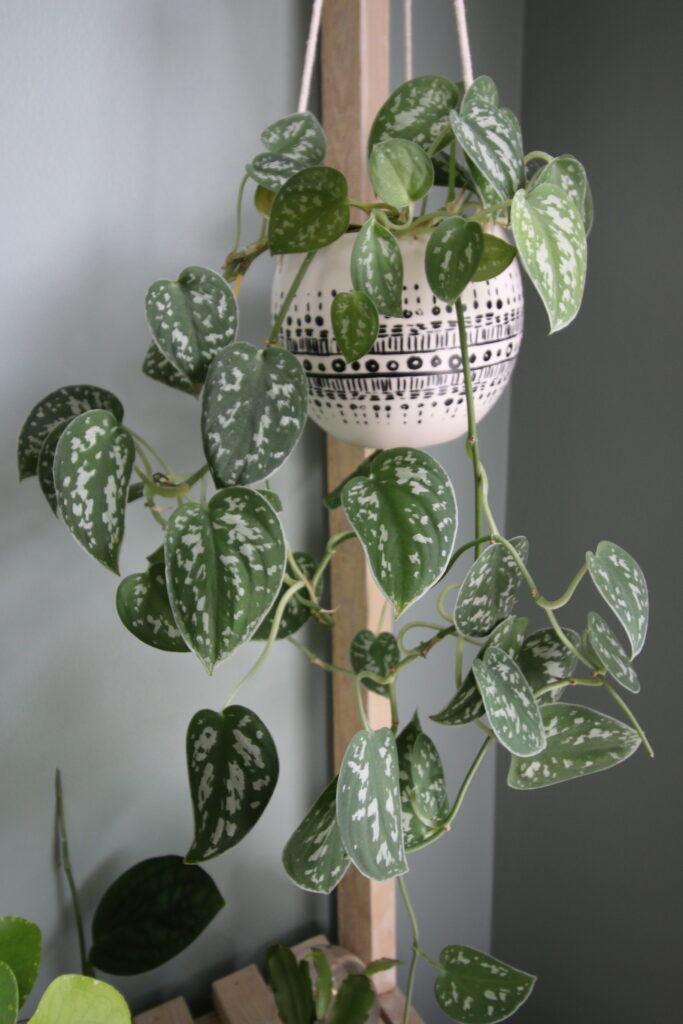
Soil and Potting
Pothos do best with well-draining soil. A standard potting mix is usually sufficient. Ensure the pot has plenty of drainage to avoid soggy soil and pooling water.
Pothos will slow down their growth and may drop leaves if they become root bound. Repot every 2-3 years into a pot that is 1 inch larger in diameter each spring.
While not necessary, providing a moss pole or trellis can encourage climbing and larger leaf development.
Fertilization
Apply a balanced houseplant fertilizer once a month during the growing season (spring and summer).
Avoid over-fertilizing, as it can cause yellow leaves and leaf drop. Skip fertilization in fall and winter.
Propagation
Propagating Satin Pothos is easy in water:
- Identify a healthy branch with new growth.
- Snip the branch with sharp scissors, ensuring at least one node is underwater.
- Remove lower leaves and place the cutting in water.
- Change the water weekly and wait for roots to develop (2-4 weeks).
- Once roots are 2-3 inches long, transplant the cuttings into soil.
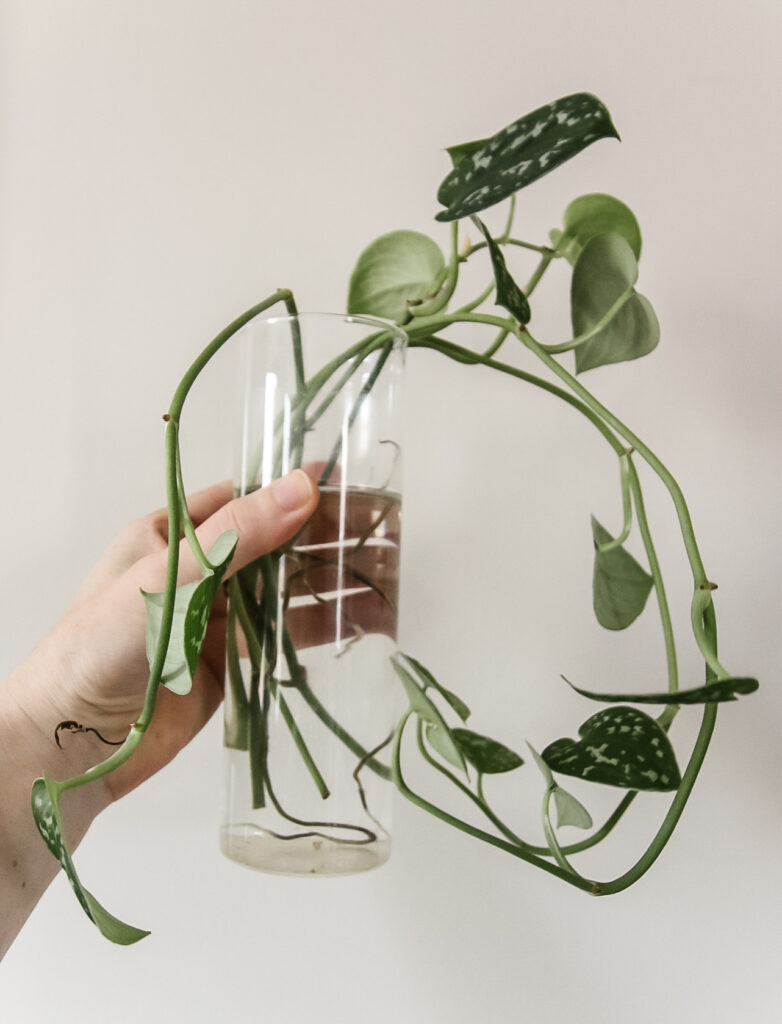
Troubleshooting Satin Pothos
Yellow Leaves
Yellow leaves usually indicate overwatering. If the soil feels soggy, let it dry out completely before watering again.
Brown Leaves
Brown, crispy leaves can indicate dryness due to underwatering, too much sun, or excessive heat.
This can often be fixed with proper watering and ensuring the plant is in an appropriate environment.
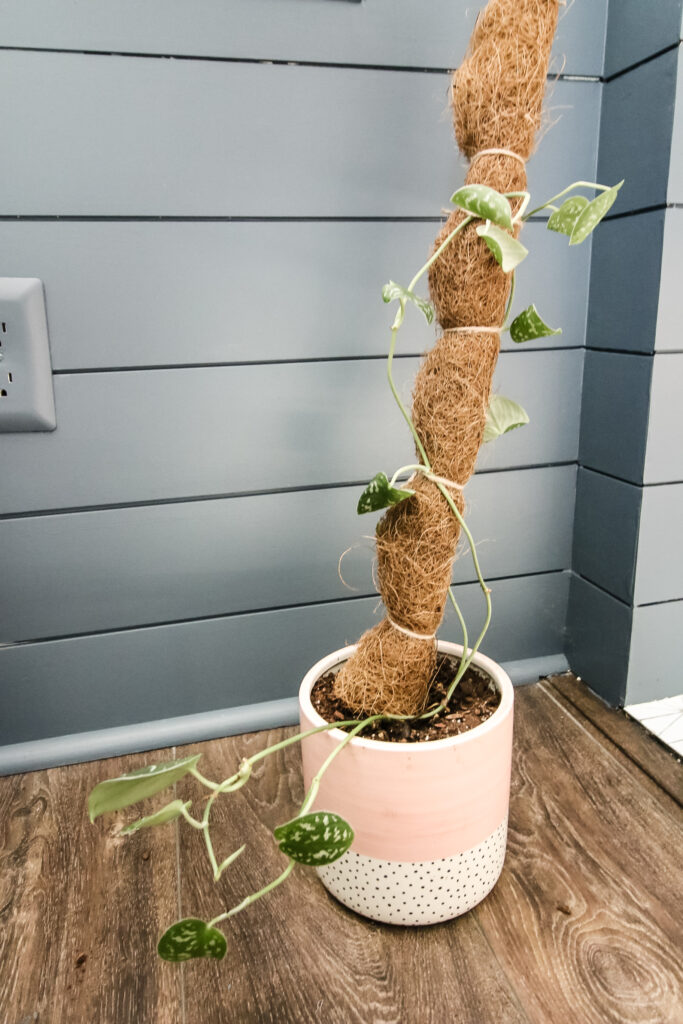
Slow Growth
While Satin Pothos is a slow grower, ensuring ideal conditions such as bright light, adequate watering, and monthly fertilization can help speed up growth.
Pests
Regularly inspect your plant for signs of pests like spider mites or aphids. Wipe down leaves with a damp cloth to keep them clean and discourage pests. Treat infestations with a gentle insecticidal soap if needed.
By following these care guidelines, your Satin Pothos will thrive, adding a touch of elegance and lush foliage to your indoor space. Enjoy the ease and beauty of caring for this delightful houseplant!
Want to Build Your Plant Care Confidence?
If you're ready to take your plant parenting to the next level, join Plant Parent School! This self-paced course will teach you everything you need to know about watering, lighting, troubleshooting, and more—so you can enjoy thriving houseplants with ease. Click here to enroll today!


